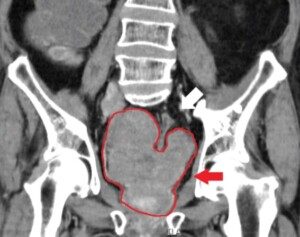Twice or even once a week exercise can actually benefit your body in multiple ways when compared to not exercising at all.
Everyone has time to exercise once or twice a week!
Exercising twice or even just one day a week may be enough to provide significant health benefits, according to a study published in Journal of the American Heart Association.
Seems this has already been known about for years, but it’s always great to have a big study to verify it so that skeptics could know that their twice a week or even just one day/week workouts are well worth it.
This research suggests that those who exercise for just one or two days each week can still achieve comparable health outcomes to those who exercise more regularly.
The “catch” is that the total exercise time needs to reach 150 minutes of moderate to vigorous exertion, which aligns with current health recommendations by the American Heart Association and World Health Organization.
Zhi-Hao Li, PhD, an epidemiologist at the School of Public Health at Southern Medical University in Guangzhou, China, and the study’s corresponding author, explains in the paper that exercising every day isn’t necessary to be healthy.
What’s important, he continues, is to get in that 150 minutes per week, making those minutes medium to intense in nature.
The benefits include reducing the risk of dying from heart disease and cancer.

Freepik.com/cookie_studio
How the Research Was Done
Researchers examined health and physical activity data for more than 93,000 people in the UK as part of a large biomedical study to explore how different exercise habits affect the risk of death from various causes.
In particular was cardiovascular disease and cancer, two leading killers worldwide.
The data were gathered through wrist accelerometers, which provide an accurate measure of movement and are considered more reliable than self-reported activity data.
The study classified participants into three groups:
- “Active weekend warriors” who completed most of their exercise on weekends (one or two days)
- “Active regulars,” who spread their activity throughout the week
- “Inactive” people, who didn’t meet the minimum recommended 150 minutes a week.
The Remarkable Results
The findings revealed that both the weekend warrior and active regular groups had a significantly lower risk of death from all causes, including from cardiovascular disease and cancer, compared to the sedentary group — as long as they met the 150-minute activity threshold every week.
Weekend Warrior Results (once or twice a week)
- Death risk from all causes was 32% lower than the “inactive” group.
- Mortality risk from cardiovascular disease was 31% lower.
- Risk of death from cancer was 21% lower.
Active Regular Results (exercise spread throughout the week)
- A 26% reduction in mortality risk from all causes.
- A 24% lower risk of death by cardiovascular disease.
- A 13% lower risk of death from cancer.
Exercising Once or Twice a Week
Spreading exercise throughout the week doesn’t automatically accrue more benefits than that of concentrating physical activity into one or two days, says this study.
Researchers initially expected the active regular group to have a much more favorable outcome. But the results proved otherwise.
So if you’re a “weekend warrior” (regardless of which days) and wondering if this has been benefiting your health all along, then keep doing what you’re doing.
But There’s a Caveat
If you’ve already been cramming 150 minutes of workouts of moderate to intense exertion into once or twice a week, then from a mental standpoint, you’re already primed for this.
From a physical standpoint, your body, as well, may be quite conditioned and able to endure this compaction of activity.
But if you’ve been inactive all along (and are “out of shape”), then trying to cram all those minutes into two days might be too much for your deconditioned body.
It might also be a little overwhelming from a psychological standpoint. But you can build up to both components gradually.
American Heart Association expert Keith Diaz, PhD, points out that attempting to fit 150 minutes of physical activity into just one or two days could strain your body.
Some research has shown that weekend warriors are at a slightly higher risk of musculoskeletal injuries compared to those who spread out exercise through the week.
But don’t hang your head; Dr. Diaz suggests that you properly warm up before starting and gradually build up your physical activity to avoid injury if you want to go the weekend warrior route.
Health Benefits of Exercising Over 150 Minutes a Week
For those wondering if there are any striking benefits to working out several days or daily per week and accumulating well over 150 minutes, I’ll cite my personal experience.
I’ve been doing this since high school and, today, in late middle age, I can still kick ass.
This is no coincidence. This is not by luck. In middle age I once lifted my father (who was around 180 at the time) up from being stuck in a bathtub: dead weight, as he was not able to use his legs to push up due to atrophy and peripheral neuropathy.
I stood behind him, secured my arms beneath his armpits, went into nearly a half squat, and employing a hybrid squat and deadlift, rose him up enough so that he could get his feet underneath himself. Few women, let alone over 45, could do this.
Spending more time working out enables your body to rise to the occasion for those very unexpected circumstances – like when I had to carry my parents’ 85 pound dog, after he’d had a seizure, to the garage and set him in the backseat.
I then retrieved him and carried this sack of 85 pounds through the corridors at the vet clinic.
I always want to “be ready.” How can I be my strongest and fastest with only 150 minutes, especially if some of my workouts are dedicated solely to cardiovascular health?
Weight management is another benefit of going above and beyond 150 minutes a week. I eat a lot, and the muscle mass that I’ve acquired from over 150 minutes a week of just strength training alone has given me a fast resting metabolism.
If all you’re aiming for are health benefits rather than also performance benefits or a faster resting metabolism, then exercising twice (or even once) a week will provide tremendous health benefits as long as you get in that 150 minutes – and make them medium to high level effort.
The Study Had Limitations
• It only measured physical activity at the baseline.
• The average age of participants was around 62.
• The majority were nonsmokers, nondrinkers, and had a lower body mass index (BMI).
• During eight years of follow-up, nearly 4,000 participants died, with 17% of those deaths attributed to cardiovascular disease and 45% to cancer.
• The study also found that people who were classified as weekend warriors tended to be younger, more educated and healthier in other ways compared to the inactive group.
Get Movin’
Get moving, at least 150 minutes per week, in any permutation of accumulated minutes.

Freepik
For example, if you have a treadmill, did you know that running on it at a challenging speed for only 30 seconds counts as exercise?
That’s because for 30 seconds you’re subjecting your body to a stimulus that forces it to work well beyond baseline.
Hop on that treadmill all throughout the day for just 30 seconds, making sure that the speed isn’t merely a comfortable jog, but one that leaves you feeling that you had to work for those 30 seconds.
A minute here, a minute there, of intense or even moderate exertion (e.g., bodyweight squats or quickly walking up and down a staircase nonstop) counts towards exercise!
 Lorra Garrick is a former personal trainer certified by the American Council on Exercise. At Bally Total Fitness, where she was also a group fitness instructor, she trained clients of all ages and abilities for fat loss and maintaining it, muscle and strength building, fitness, and improved cardiovascular and overall health.
Lorra Garrick is a former personal trainer certified by the American Council on Exercise. At Bally Total Fitness, where she was also a group fitness instructor, she trained clients of all ages and abilities for fat loss and maintaining it, muscle and strength building, fitness, and improved cardiovascular and overall health.
.










































